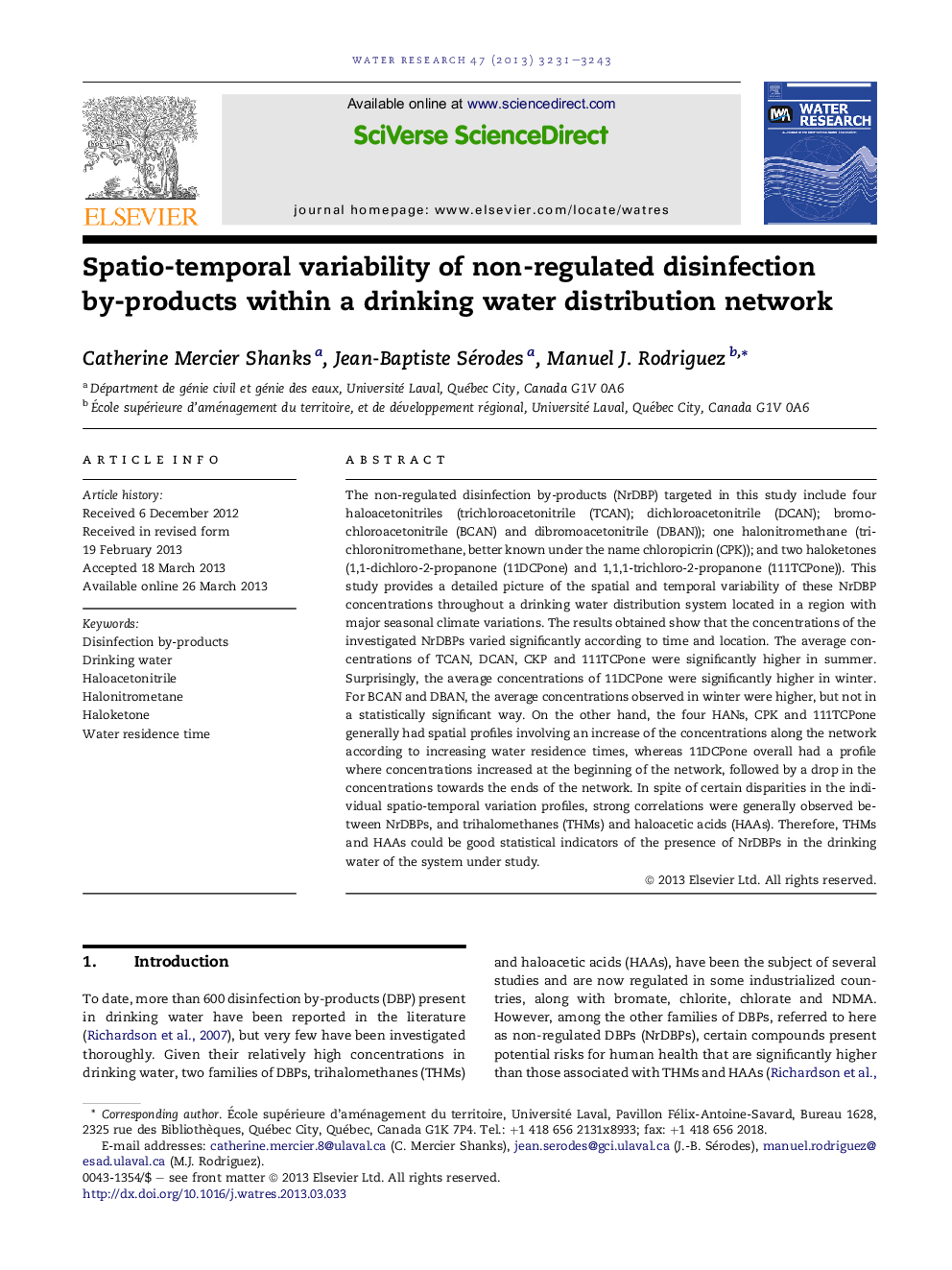| کد مقاله | کد نشریه | سال انتشار | مقاله انگلیسی | نسخه تمام متن |
|---|---|---|---|---|
| 4482138 | 1316848 | 2013 | 13 صفحه PDF | دانلود رایگان |

• We investigated the variability of non-regulated DBPs (NrDBPs) in drinking water.
• A sampling program was designed based in locations where water residence time is known.
• Considerable spatial variations of NrDPBs levels were observed along the water network.
• Seasons significantly affected the variability of NrDPB concentrations.
• Levels of NrDPBs were correlated with trihalomethane and haloacetic acid levels.
The non-regulated disinfection by-products (NrDBP) targeted in this study include four haloacetonitriles (trichloroacetonitrile (TCAN); dichloroacetonitrile (DCAN); bromochloroacetonitrile (BCAN) and dibromoacetonitrile (DBAN)); one halonitromethane (trichloronitromethane, better known under the name chloropicrin (CPK)); and two haloketones (1,1-dichloro-2-propanone (11DCPone) and 1,1,1-trichloro-2-propanone (111TCPone)). This study provides a detailed picture of the spatial and temporal variability of these NrDBP concentrations throughout a drinking water distribution system located in a region with major seasonal climate variations. The results obtained show that the concentrations of the investigated NrDBPs varied significantly according to time and location. The average concentrations of TCAN, DCAN, CKP and 111TCPone were significantly higher in summer. Surprisingly, the average concentrations of 11DCPone were significantly higher in winter. For BCAN and DBAN, the average concentrations observed in winter were higher, but not in a statistically significant way. On the other hand, the four HANs, CPK and 111TCPone generally had spatial profiles involving an increase of the concentrations along the network according to increasing water residence times, whereas 11DCPone overall had a profile where concentrations increased at the beginning of the network, followed by a drop in the concentrations towards the ends of the network. In spite of certain disparities in the individual spatio-temporal variation profiles, strong correlations were generally observed between NrDBPs, and trihalomethanes (THMs) and haloacetic acids (HAAs). Therefore, THMs and HAAs could be good statistical indicators of the presence of NrDBPs in the drinking water of the system under study.
Journal: Water Research - Volume 47, Issue 9, 1 June 2013, Pages 3231–3243